Recently we told you about filling the gaps around the picture rail in our bedroom with caulk and redoing the seal around our bath with silicone. There is a huge selection of different sealants available and choosing the right one can be difficult.
Our quick guide will make choosing the right product easier.
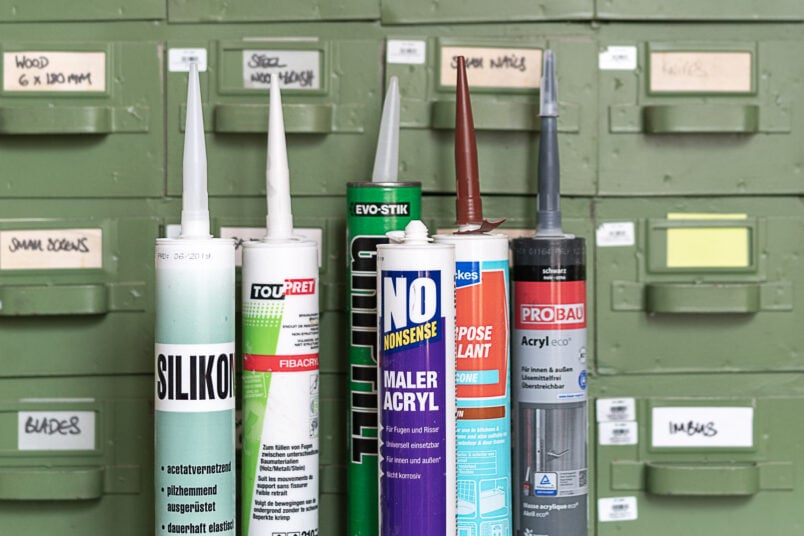
Basically, both acrylic caulk and silicone do the same job. Still, there are some significant differences to consider when choosing whether silicon or caulk is right for your application.
This post contains affiliate links. We only recommend products we love and think that you will, too! Read our full disclaimer here.
Silicone
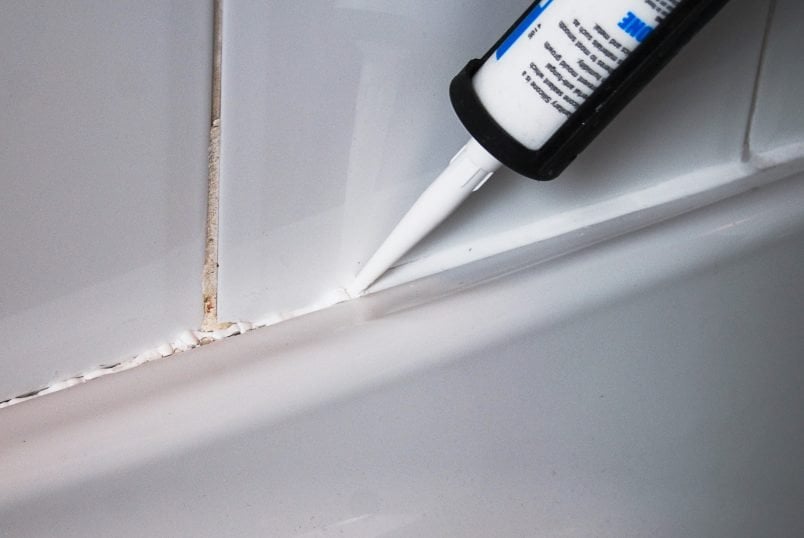
Pros of silicone:
- Silicone is highly elastic and will adhere well to any smooth surface
- Because of its elasticity, any movement in the joint should be tolerated and the silicone won’t tear. That’s why it’s better than acrylic caulk for larger joints.
- Silicone is ideal for rooms with higher moisture levels (like kitchens and bathrooms) as it is water-resistant
- It’s ideal for sealing around baths, showers and other sanitary ware
- It’s cold and heat resistant as well as non-yellowing
- Silicone is available in different colours, including clear
- In bathrooms only use sanitary silicone, which contains a fungicide to prevent mould
Cons of silicone:
- You can’t paint over silicone
- When it’s dry, you can’t apply another layer on top
When to use silicone
Silicone is waterproof which makes it ideal to use in areas that get wet like bathrooms or on exterior projects. Unlike caulk, it can’t be painted but silicone sealant is available in a wide range of colours to suit your project. It’s also available with additives that help provide additional protection against mould, making it ideal to use around showers and bathtubs.
Silicone sealant is very flexible which makes it ideal to seal edges around showers and baths, sealing gaps around kitchen counters and even gaps around exterior window frames
If you are using silicone for your project, don’t forget to check out this guide on how to apply silicone.
Get our favourite silicone!
Acrylic Caulk
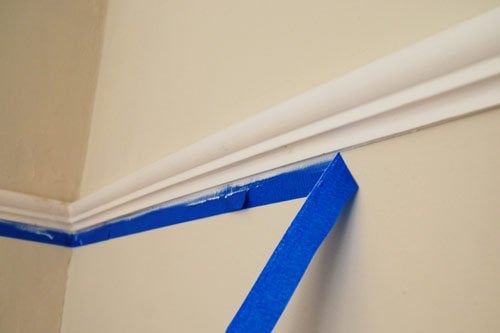
Pros of caulk:
- Caulk dries quicker than silicone
- It’s less tolerant to movement than silicone – should only be used in areas where there is little or no movement
- Caulk is ideal for filling gaps in living areas like between skirting boards, picture rails and built-in furniture
- You can paint over it with any paints or varnishes
- While it’s still wet, it can be easily removed with a damp cloth
- When completely dry, acrylic caulk is much harder than silicone
Cons of caulk:
- Acrylic caulk tends to shrink slightly when drying, so the application of a second layer may be necessary
- It’s not for use when in contact with water (i.e. around sanitary ware)
When to use caulk
Unlike silicon sealant, decorators caulk is paintable which makes it ideal for any kind of application where you’re sealing the gap between walls and woodwork. This means that caulk is ideal for sealing the gap around things like skirting boards, architraves, any kind of wall mouldings like panelling or picture rails and around interior window frames.
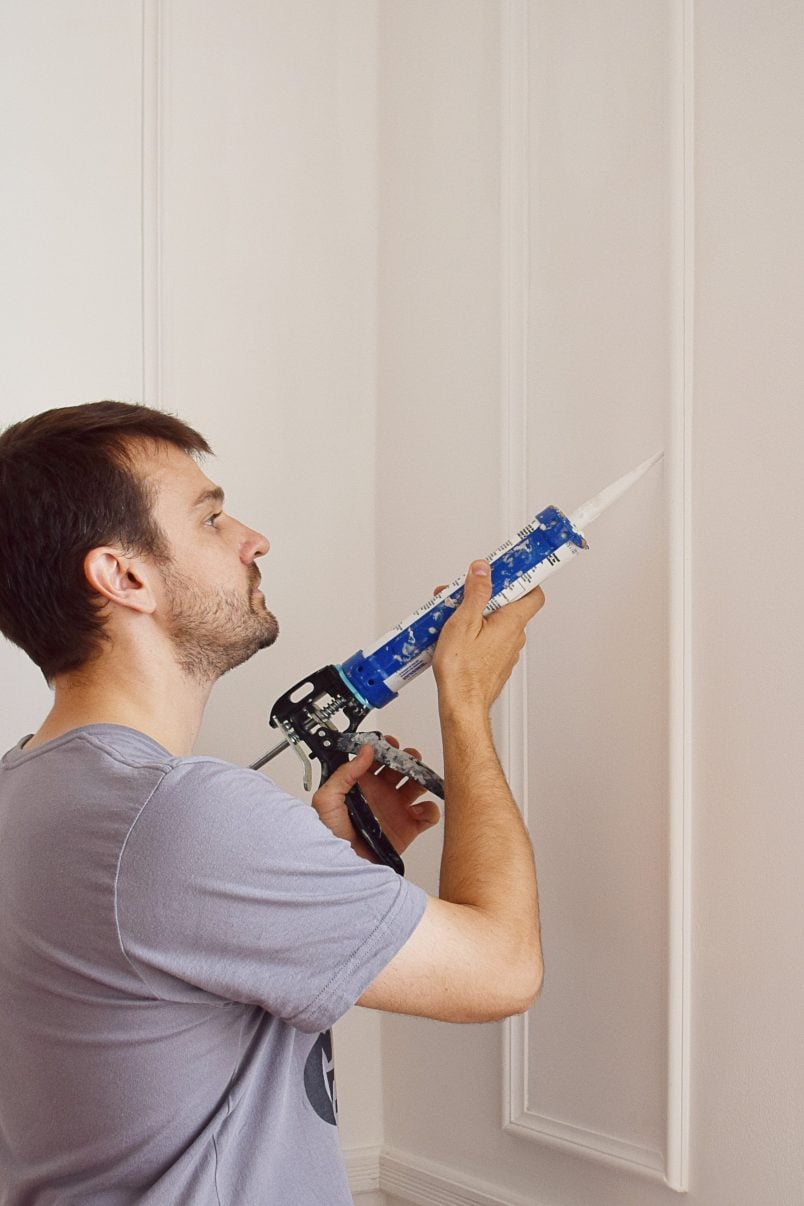
Get our favourite caulk!
If you are using caulk for your project, don’t forget to check out this post where we share how to achieve perfectly smooth and clean caulk.
We hope this caulk vs silicone guide makes it easier for you to choose the right product for your next project.
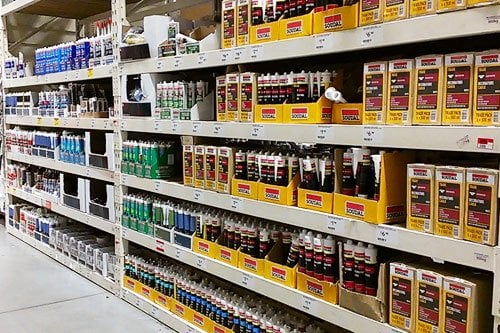
Silicone vs. Caulk FAQ
To seal edges around bathtubs, showers and washbasins you will have to use a silicone sealant to ensure a waterproof seal.
If you have any wooden panelling or moulding that you want to paint over, it’s still best to use an acrylic caulk.
If you have large gaps that you need to fill, it’s best to use a caulk saver first Caulk savers are flexible foam rods that you squash into the gap before applying the caulk with a caulk gun. They reduce the amount of caulk you need to use and are perfect for filling large openings.
You can use silicone sealant instead of caulk but we don’t recommend it. Although both are made to fill gaps and cracks, they are designed for different applications. Also, remember that silicone sealant isn’t paintable. 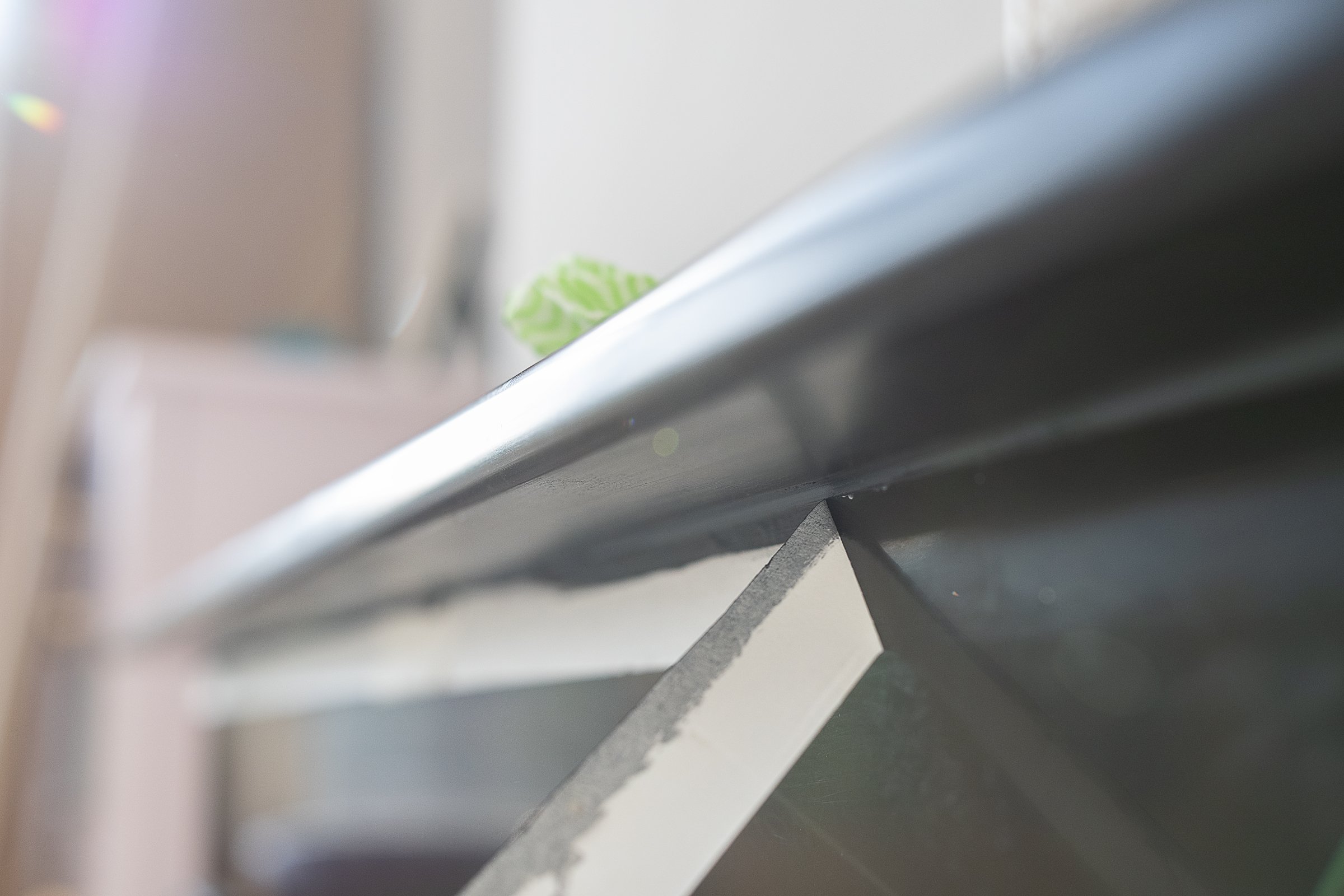
If you are filling small gaps and cracks, you don’t need to spend a lot of money on decorators’ caulk. We always use this decorator’s caulk for filling any gaps around skirting, architraves and panelling. It’s easy to use, affordable and always gives a great result.
If you use masking tape to help you achieve a perfect line when caulking, it’s best to remove it as soon as you’ve finished smoothing the caulk. You can still remove the masking tape when the caulk has dried but you could accidentally rip the dried caulk.
Both caulk and silicone are sealants but they are not the same thing. Caulk can be painted over and is best used for gaps between woodwork and walls while silicone is more flexible and waterproof and is best used in bathrooms and kitchens.
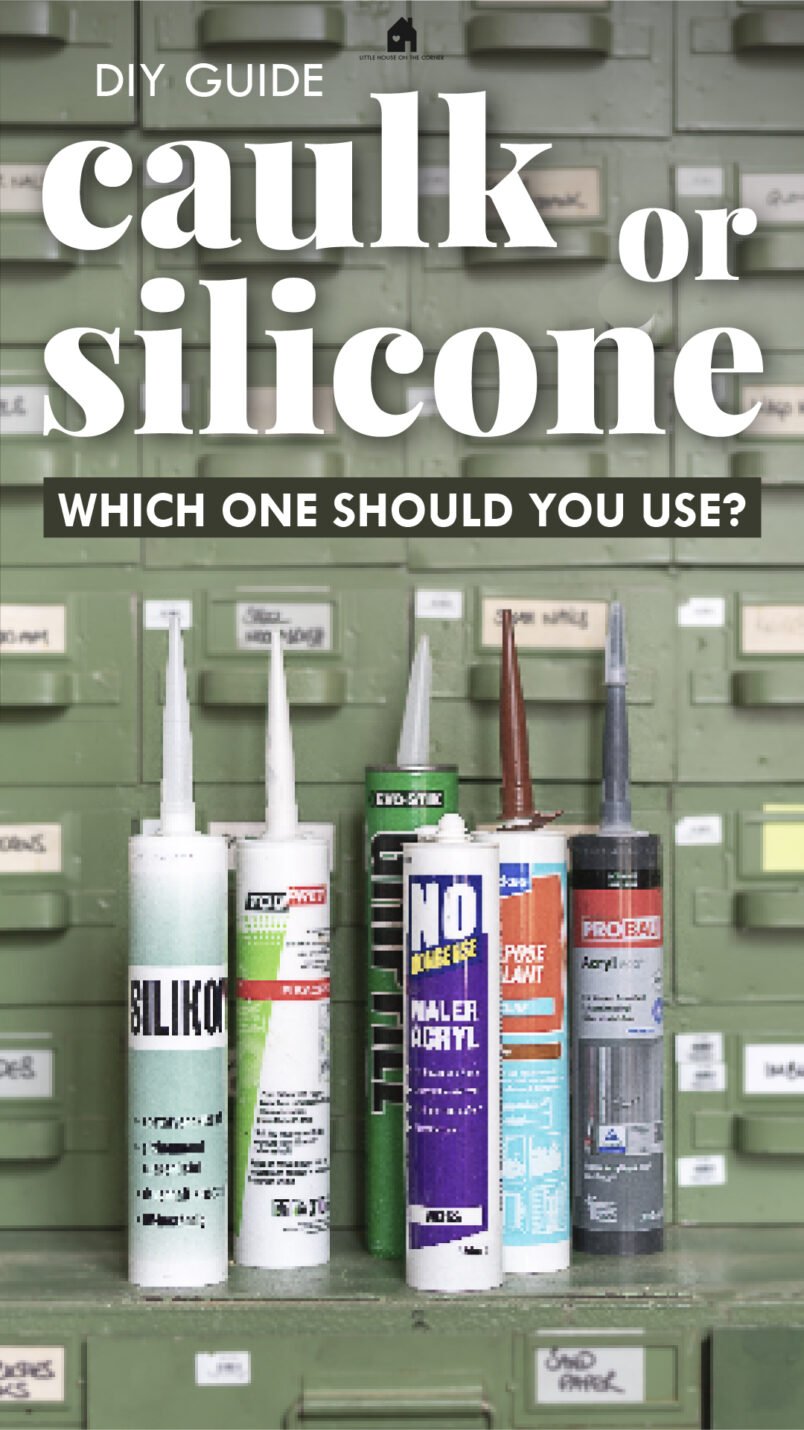


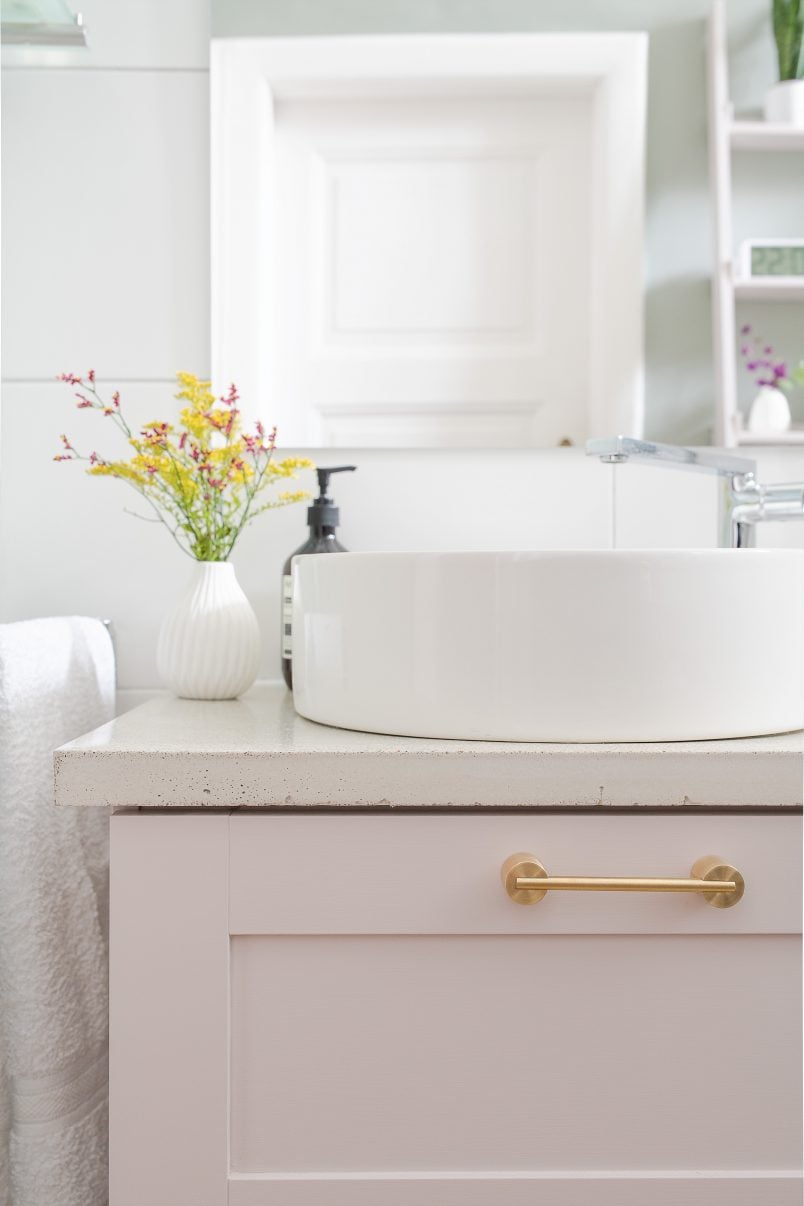
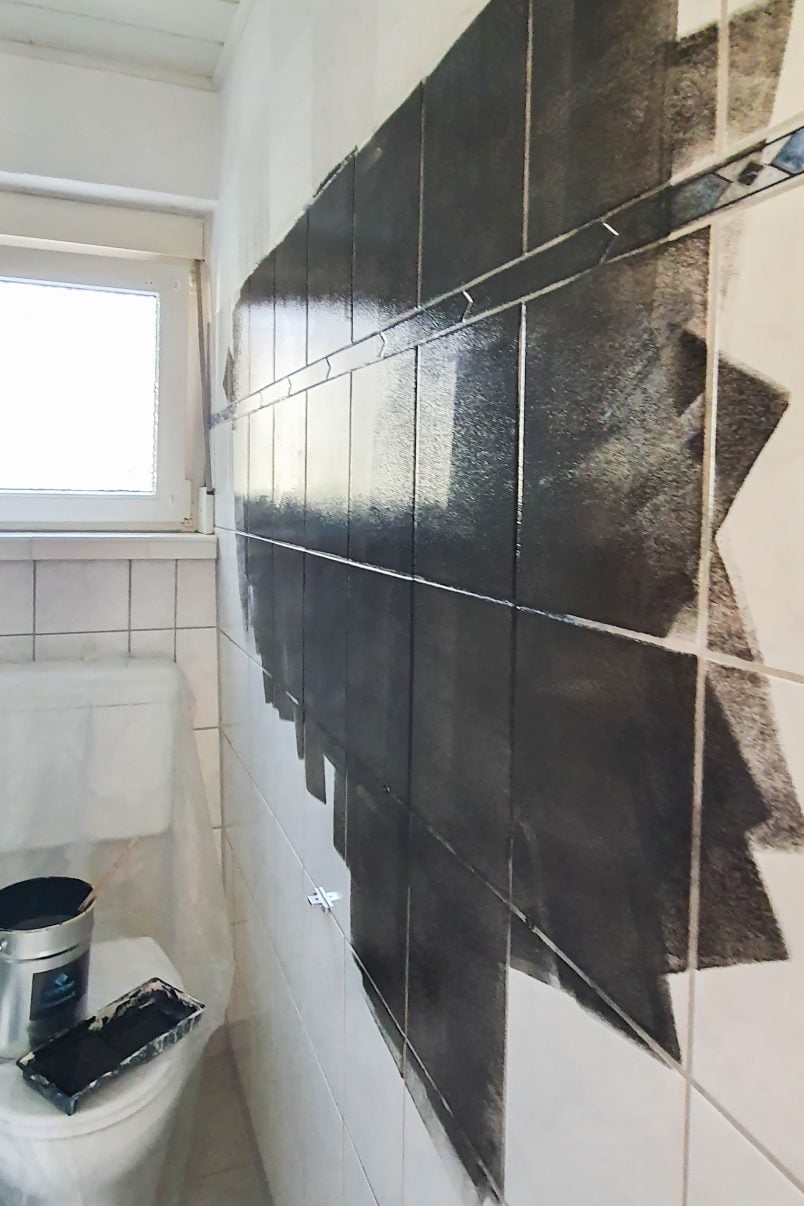
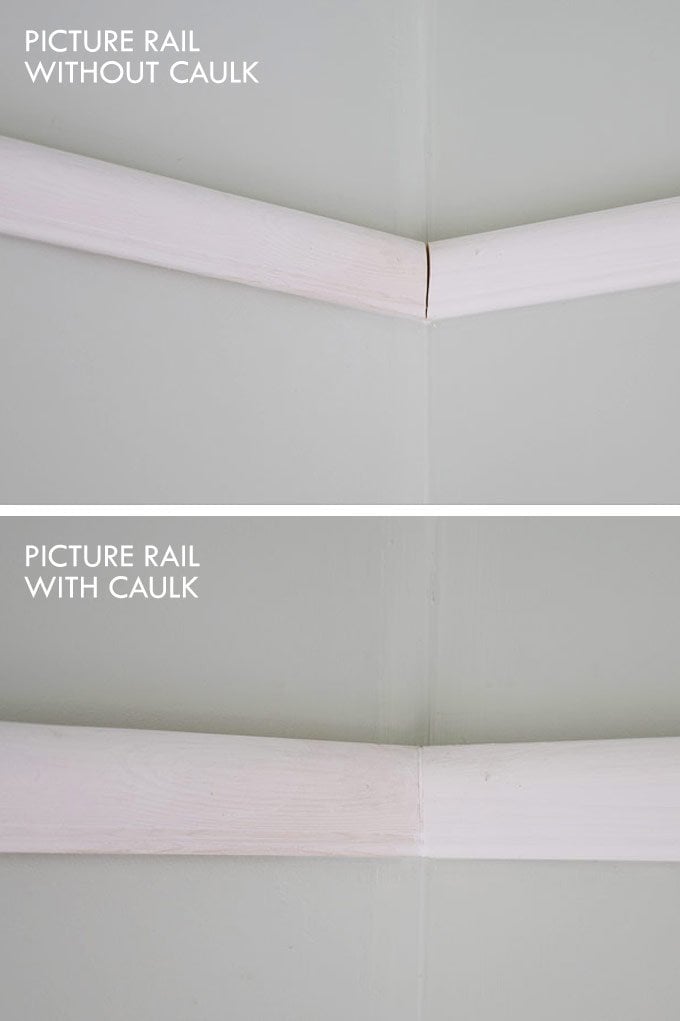
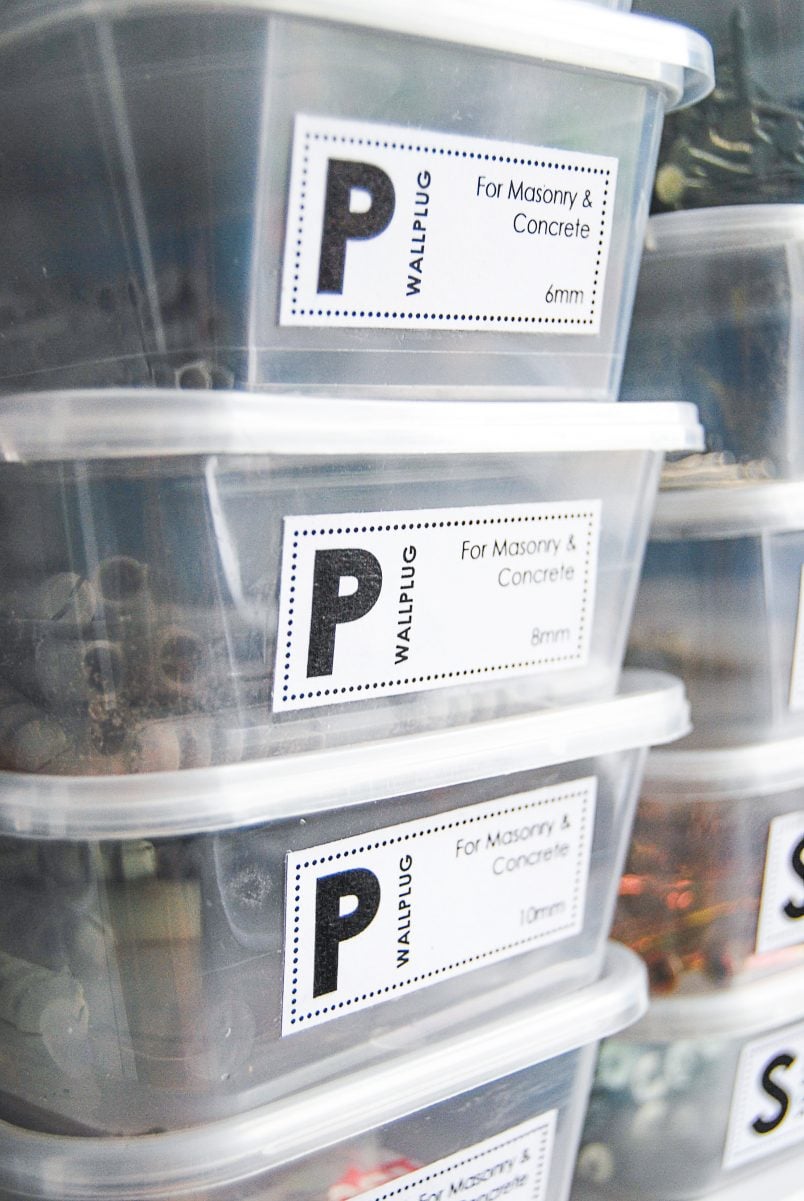

Carole says
I am about to paint an accent wall behind the bathroom vanity, the colour is very dark and I just discovered the silicone isnt paintable. Removing the stuff isnt possible as the vanity butts up against the drywall so it would make a big mess. Any suggestions as to the best way to solve my problem? I read shellac primer over the silicone works, would you agree>?Its not my house and I am nervous of screwing up. Thanks you
Christine says
That’s a tricky situation, Carole. Ideally, you’d replace the silicone but I understand that this may not be possible. I don’t have experience painting silicone but I could imagine that an oil-based paint would stick to it (although I’m not sure how that will impact the silicone long term). Sorry I can’t be more help on this! Keeping my fingers crossed that you find a solution.
Cx
Dcam says
Apologies this is such an old post but I’ve found it so helpful – thank you! Where small cracks/gaps have formed between the skirting board and wall, would you use caulk or wood filler? Many thanks!
Christine says
Always happy to help! Around staircases is always one of the most difficult areas to fill cracks as there’s a lot of movement. If the gaps aren’t too large, use caulk but make sure to use one that’s super flexible and tolerates movement. Something like this one would be ideal.
Hope that helps!
Cx
Gerry says
Another pro tip they don’t tell you: caulk is for fillings gaps less than 2mm. For larger gaps use filler (because it doesn’t shrink and you can sand it).
Christine says
Totally agree with you, Gerry! Thanks for sharing. People often think that they can fill anything with caulk but it can quickly become messy.
Cx